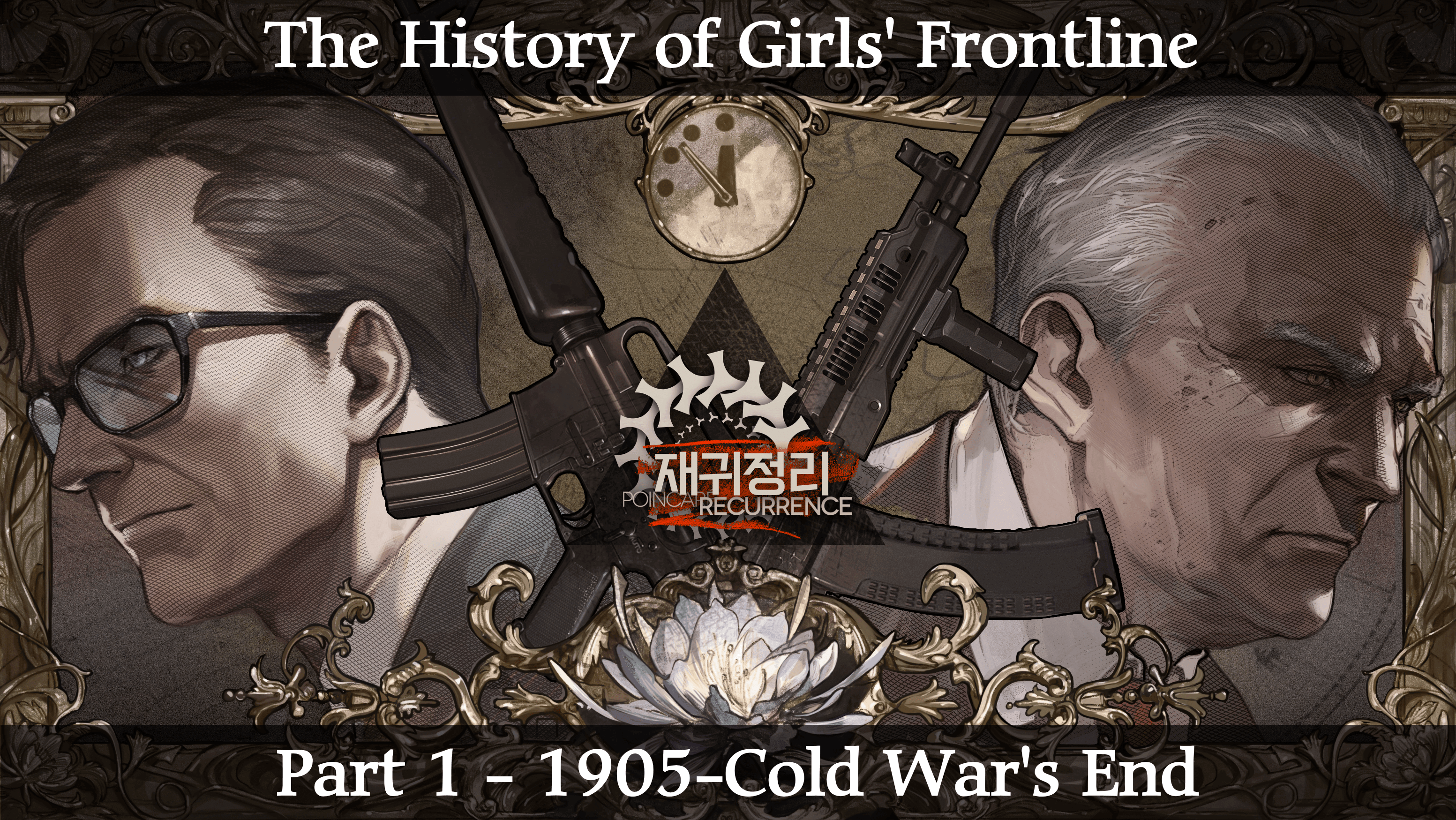Forward
Since the dawn of time, humanity has been driven by technological advancement. In the earliest days of man, advancement was caused by the need to survive. Controlling fire, building tools, and making clothes were some of the earliest achievements in this effort. Once we became masters of ourselves, we moved to become the masters of the land. We began farming, we built grand civilizations on the shores of the greatest rivers, and we began to conquer the land outside of our homes. In this, humanity became the dominant species on Earth, and the only force that could constrain us was our willingness to do what we wished.
The Secret Documents and Confidential Files of the Bakery Girl and Girls’ Frontline universe pose a question for humanity. “How would the nations of the world react if they were handed a piece of power from Gods?” This God-like power could ascend us to a new stage of evolution; however, it also had the potential to completely wipe us away. Who would use it to advance us as a people? Who would use it for more sinister means? Can humanity truly control the very fire stolen by Prometheus?
The 1900s & 1910s
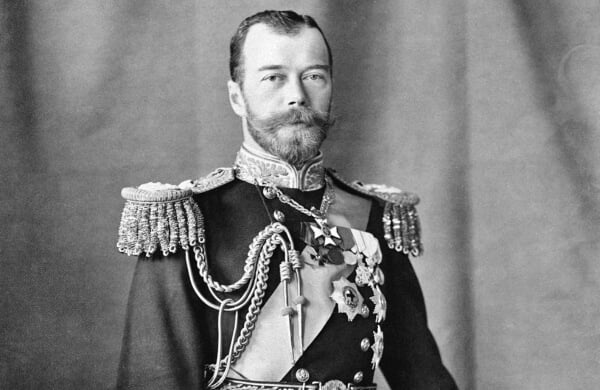
Portrait of Tsar Nicholas II Romanov.
The year 1905 marked the beginning of the timeline that would lead to Girls' Frontline and Reverse Collapse Code Name Bakery. During that year, Tsar Nicholas II Romanov of the Russian Empire ordered an expedition to a site near the Tunguska River in Siberia. The exact location is unknown, but by the end of the expedition, the Russians had come across the ruins of an ancient civilization. At that time, the Russians had no idea about the scale of their discovery. Soon after returning to the Tsar, Romanov ordered a research headquarters to be built for an investigation into these ruins. The first Relic research headquarters was set up at Lomonosov State University in Moscow. The Tsar directly commanded the facility and ordered all research to be shared with the Kremlin. For the next three years, research into the matter grew more diligent and thorough.
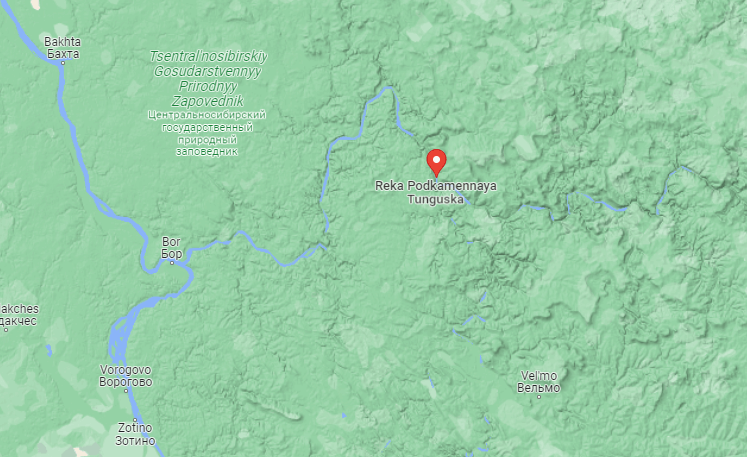
The general area where the Tunguska River Relic Site should be.
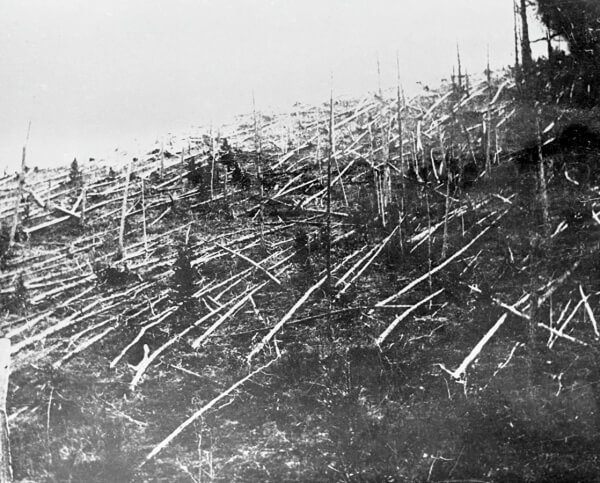
The catastrophic aftermath of the Tunguska Event.
For the first three years, Relic research was quite fruitful for the Russians. At that time, no one besides the Kremlin or the University researchers were aware of the “Relics” or the “Relic site”. However, the first mistake made with Relics was, without a doubt, catastrophic. On June 30th, 1908, researchers at the Tunguska River Relic site were working with a “reactor” of sorts. It’s unknown what caused the instability of the reactor, but the consequence of losing control was severe. A massive explosion occurred that day when stability was lost. The blast instantly annihilated much of the surrounding area with atom bomb-like effects. This event would later be more commonly known as the Tunguska Event and was the first disaster caused by misuse of the Relics.
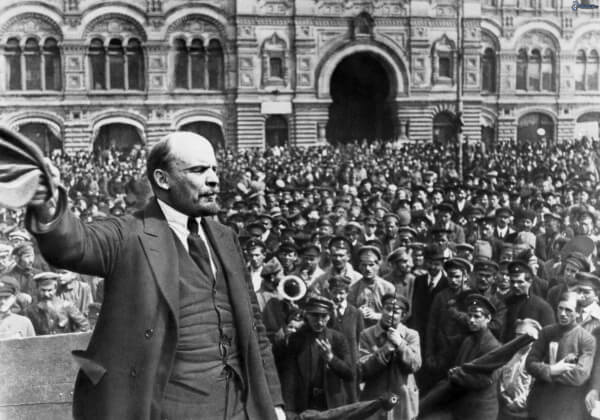
Vladimir Lenin speaking to the crowd during the revolution in 1917.
Following the Tunguska Event, the Russians became very hesitant about the Relics. Further research would soon be cut short due to the situation in Europe. World War I forced Relic research to be put on hold for several years as the focus needed to be shifted towards the war effort. In 1917, political and class divisions in the Russian Empire boiled over, leading to the Bolsheviks overthrowing the Tsar. Following the October Revolution, Relic research seemed to be put on permanent hiatus. It was not until the late 1920s and 1930s that Relic matters would gain attention once more in the Union of Soviet Socialist Republics (USSR).
The 1920s & 1930s
Soviet Relic Research
The late 1920s and 1930s reopened the investigations into the Relics. The Soviet Union began to look into the findings of Lomonosov University made before the war. Unfortunately for Relic research, the Soviets’ efforts were put on hold once more due to the rise of Joseph Stalin, and later, the Great Purge. The Soviets would not investigate further into the matter until near the end of World War II. Around the same time as the Soviet’s work ceased, another group in Europe had begun their own investigation.
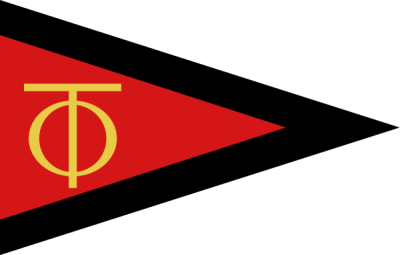
Pennet of Organization Todt.
With the rise of the Third Reich, certain organizations within the Nazi regime began researching various ways to benefit the Reich. The Organization Todt, a civil engineering group that also investigated the occult, made a monumental discovery in Germany. Sometime during the mid 1930s, Todt discovered a colossal hollow beneath the Nordhausen Harz mountains in Central Germany. The height of the hollow was measured to be approximately seven stories tall and was determined not to be a natural formation. This would come to be the second Relic site found by humanity and would be given the name of “Urkunde-01”.
While the true purpose of the site would not be determined until the Soviets took over, the Germans made several discoveries and advancements of their own. The existence of this hollow was considered top secret, with very few besides the government and Todt aware of its existence. Thanks to the secrecy provided by the arrangement, research into nuclear arms and V-type rockets was stored here during WWII.

A capsule of Collapse Fluid in 2064.
Meanwhile, an unknown matter was stored in “crystal capsules” throughout the site. This unknown substance was observed and recorded by the Nazi Dr. Josef Mengele, The Angel of Death. While working at Urkunde-01, Mengele reported in his notes that many of the workers and researchers were falling ill to an unidentified disease. As these individuals were in close contact with the substances found at the site, Mengele hypothesized the unknown matter was the cause of the illness. However, when reporting his findings to the Reich’s leaders, they ignored the report and dismissed the disease. The Reich continued its research into the Urkunde-01 site throughout the 1930s and partially during the war. Urkunde-01 became the Third Reich’s best-kept secret up to the end of the war.
The 1940s
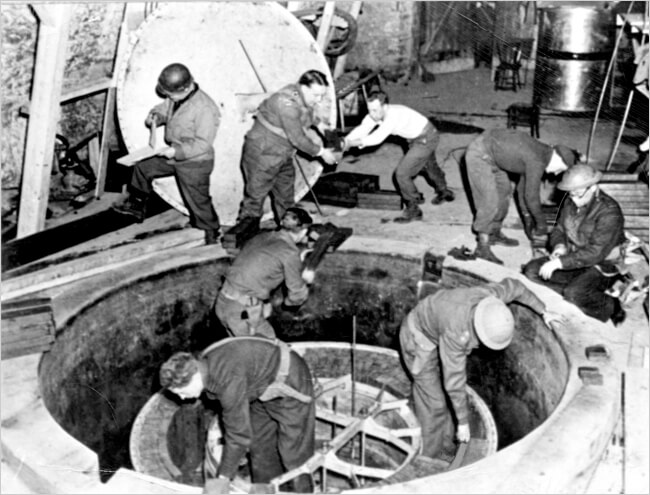
British and American Alsos Mission members in Haigerloch in April 1945.
From 1939 to 1945, the world was faced with an unimaginable bloody conflict unseen ever before upon the face of the Earth. As the allies across the globe pushed the Axis powers back into their native countries, the allies began to look beyond the war. It was clear by 1945 that the Americans and Soviets would become the world’s new superpowers following the war’s end. Both sides saw the writing on the wall and were rapidly becoming interested in gaining the edge over one another both technologically and politically. Despite the difference between the East and West, the objective was mutual. Gain the edge needed to stay ahead in the coming conflict.
Spoils of War
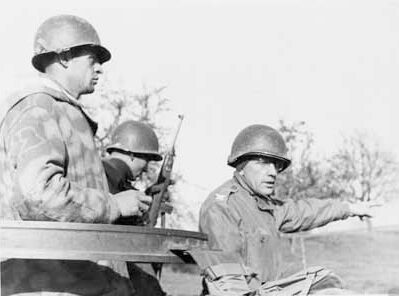
Photo of Colonel Boris Pash (right) in April 1945.
Before the end of the war, the Americans and Soviets formed war spoils groups. The goal of both nations was to gather more information and research left by the Third Reich and the Japanese Empire than the other. The United States of America (US) formed “Team Alsos”, a war spoils and plunder team led by a Russo-American named Colonel Boris Pash. On the Soviet side, a “Trade Federation” unit was formed that directly reported to the State Defense Committee during operations. Desired intelligence and technologies included, but were not limited to: nuclear and atomic research, yellowcake, rocket technology, “saucer-like” craft, flying weapons, jet propulsions systems, and swept-wing aircraft. However, despite the plethora of available research, the Soviets set most of their focus in another direction.
As Team Alsos and the Trade Federation continued their plundering of Axis research, many Germans had ended their investigations and abandoned their military-industrial projects. Several of these projects, and the relevant Relic information among them, were stored in the town of Bleicherode. Residing in the state of Thuringia, near the Nordhausen mountains, its remoteness made it perfect to hide secrets. The Urkunde-01 Relic site was located not far from Bleicherode as well. Before the fall of Berlin, Alsos and the Trade Federation had caught wind of the information stored in the town, and it became a race against time to arrive in Bleicherode and gain control of Organization Todt’s secrets. Despite the best efforts of the Trade Federation, Alsos managed to arrive in Bleicherode first.
Satellite view of Bleicherode in the modern day.
As the Americans entered Bleicherode, it was clear Alsos was unprepared for the volume of information stored there. Due to a lack of personnel, they had a limited amount of time and resources to secure all the intel, and the desired fruit of Alsos’ labor was Third Reich nuclear research. Nearly all atomic and rocket research, as well as several key Reich scientists, including Wernher Von Braun, were taken by Alsos. Research into the “Relics” was mostly ignored compared to the importance of nuclear technology. This would prove a crippling mistake on the Americans’ part. Had Alsos taken this information, the Soviets would’ve been left empty-handed for their main purpose was the Relics.
As the majority of all information about Relics and the ancient civilization was held in the hands of the Soviets, the information held by the Germans only aided their efforts. Once the Trade Federation arrived, all research about the Relics was taken. In some of these German documents, details referenced the nearby Urkunde-01, leading the Soviets to begin moving to secure the site. Earlier, in 1943, the Soviets heard rumors about the site from captured Axis POWs but had no concrete evidence until Bleicherode. Workers, including Dr. Mengele, at the Relic site, were forced into surrender by the Soviet force. The Trade Federation had found the Reich’s best-kept secret and the keys to the castle with it.
Location of Bleicherode and the nearby Nordhausen Mountains in Thuringia.
The discovery of Urkunde-01 by the Soviets had opened Pandora’s Box on Relic research. The Tunguska Site was no longer the only ancient site available for study. During the German surrender, Dr. Mengele was taken as a POW. Mengele’s notes about the site and his experiments in the concentration camps piqued the interest of the Trade Federation. Information related to the mysterious matter contained at the site was handed over by Mengele as well. At the time, both sides had no concrete idea what the matter was, but Mengele insisted it caused an illness. With the fall of the Nazi regime by May, and control over the Urkunde-01 intel, the USSR gained an additional ten years of Relic research. The Americans had failed in the Relic field and were none the wiser to the Soviets’ true plans. Team Alsos was conned into believing they had won the war for research.
The Cold War Begins
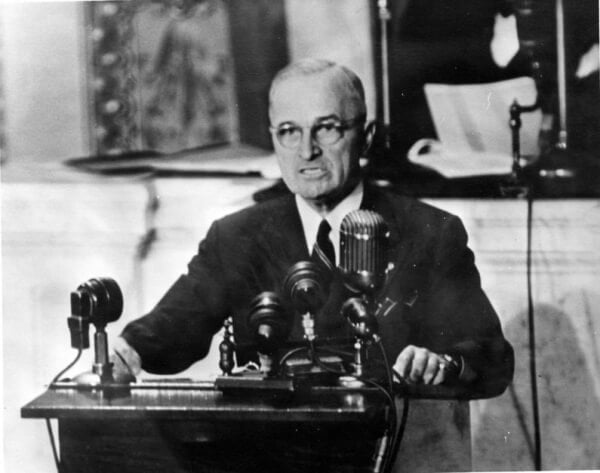
President Truman speaking to Congress on March 12th, 1947.
As the flag of the Reich fell in Berlin, the East and West were soon thrown into another conflict. This war would not be a true war per se, but rather, a war fought with propaganda, military-industrial advancements, and proxy wars. For the first two years following the end of WWII, life carried on and Europe went about reconstruction once more. On March 12th, 1947, American President Harry S. Truman declared to Congress that the United States would assist all nations under threat by authoritarianism, particularly the Soviet Union. To Truman and many in Europe, the threat could not be tolerated in Greece and Turkey. Truman’s well-known “Truman Doctrine” would be marked as the beginning of the period known as the “Cold War”.
On the other side of the world during this time, the USSR began their response to the US for the coming conflict. The Kremlin would soon double down on their research and investigation into nuclear, aerospace, and Relic technologies. While the Americans had the technical edge early on thanks to the Manhattan Project and Team Alsos, the Soviets had already gained a fifty-year lead on Relics. The Americans were busy designing massive bombers and carriers such as the B-36 and the United States-class, the Soviets’ R-5 missiles exceeded American Redstone and Jupiter missiles. They later sent the remnants found at OKB-456 to the Almaz-Antey design bureau, where new anti-air missile technology was developed that surpassed the US’ own systems. The Americans were likely unaware of Relics at all until at least 1955. However, by 1949, the Soviets were closing the gap in ballistic missile technology. Additionally, they had made a monumental discovery from the Urkunde-01 site. One that had the chance to shift the balance of power almost entirely into their hands.

The Tabasar-B Starfish in 2064.
Urkunde-01 would eventually become the site of the so-called “First Relic”. In the files concerning the site, the Germans determined it must have been a “production system” of sorts, but had little evidence and understanding of the matter. When the Soviets gained access to these files, the Kremlin authorized “Project Starfish” to build a replica of the First Relic in the Tabasar-B Proving Grounds in the USSR. Despite lacking a complete understanding of what it would create or its true purpose, the Soviet plan was put into action. By 1950, construction based on the Urkunde-01 data was finished. Although secrecy was held in high regard, news of this facility had reached Washington with both worry and skepticism. While Washington lacked any factual reports about what the Soviets were truly testing at Tabasar-B, they authorized the placement of short-range ballistic missiles (SRBMs) in allied European nations. These SRBMs would act as a contingency in the event of a full-scale nuclear exchange, with Tabasar-B being a primary target.
The 1950s
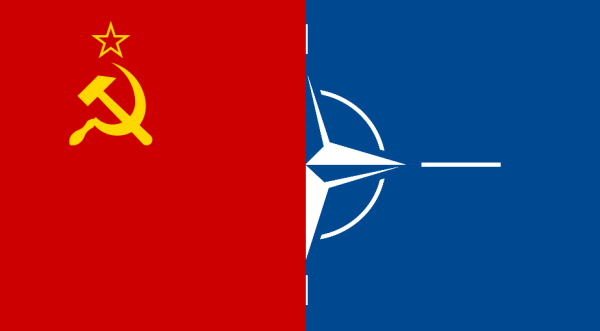
Combined flags of the Union of Soviet Socialist Republics and North Atlantic Treaty Organization.
As the Cold War began, the Soviets managed to maintain a serious lead in Relic technologies over the newly formed North Atlantic Treaty Organization (NATO). The was not even a known subject by the Americans until their discovery in 1955. As NATO deployed nuclear arms to their borders, the Soviets created the world’s first Relic weapon and technology program. The Tabasar-B facility is believed to be the first reverse-engineered piece of Relic technology, based on the First Relic from Urkunde-01. Additionally, the Soviets became naturally more curious about the properties of Relics and their possibilities. As the Warsaw Pact was forming in 1955, NATO realized this was their only opportunity to infiltrate and find intelligence before the Pact officially formed. It would be during this infiltration that the US would learn about the so-called “Relics”, but they lacked sufficient evidence to prove their existence.
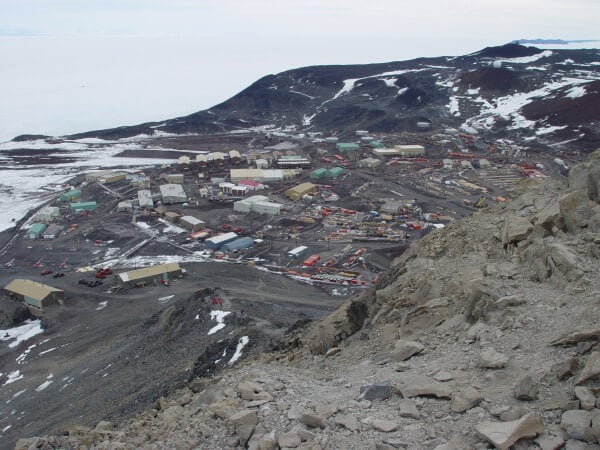
McMurdo Station seen from Observation Hill in 2004.
The United States lacked concrete evidence for the existence of Relics until a discovery in 1955. McMurdo Antarctic Surveillance Station was established in 1955 near the shore of Lake Vostok in Antarctica. In the same year, the US would discover their first Relic site approximately a kilometer away from the station. Relic Site D-1, named the “Door”, served as proof of the existence of Relics, and would open Pandora’s Box for the Americans. Contained at the site was a “gate” of sorts as well as various mechanical remnants. The remains were brought back to the United States to be studied and reverse-engineered. Around this time, Washington funded black-budget organizations to deal with matters relating to the Relics. Scientists and researchers from the US Air Force, Lockheed-Martin, and the Advanced Research Project Agency would collaborate in the reverse-engineering of the D-1 remnants throughout the Cold War.
During this process, Lockheed-Martin founded its “Skunk Works” sector as a cover for these projects. Various well-known aircraft systems and designs were developed based on the D-1 remains. The U-2, SR-71, F-117, F-22, and next-generation fighter programs all derived from the project. As the Americans began to cross into a new age of technological advancement, the Soviet grasp on Relics grew tighter. In the years following D-1’s discovery, the Americans would soon realize how far behind they truly were.
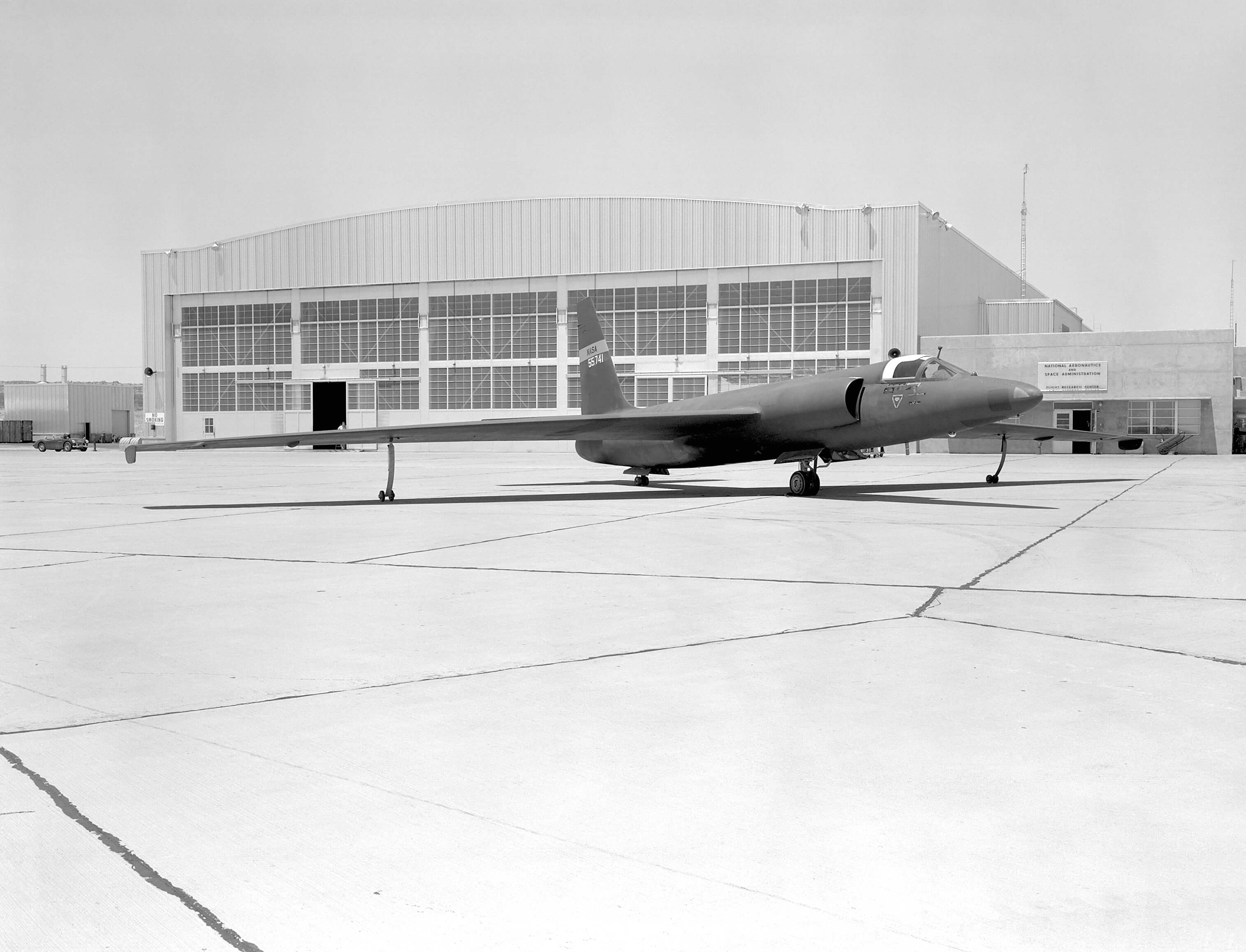
A U-2 plane with fictitious NASA markings in May 1960 after the U-2 Incident.
On May 13th, 1958, the United States launched a secret reconnaissance mission of the alleged Tabasar-B facility. The U-2, an aircraft derived from the reverse engineering of Relic technologies, was chosen for this mission. The operation began during the day, with the U-2 taking off from an undisclosed location. As the aircraft flew over the Proving Grounds, several images and videos were taken from the onboard cameras. The footage would deliver a realization to Washington that the Soviets already had a significant lead in Relics. Images taken from the U-2 presented a complex spanning the entire proving grounds. At the center of the site lay the Tabasar-B facility itself with a massive array of defense systems around it.
The facility consisted of five axes that radiated outward from the center at 120° angles. An array of anti-aircraft weapons in a ring surrounded the facility in the event of an aerial attack. Multiple S-75 surface-to-air missile (SAM) systems were in firing positions at that time. The images showed multiple roads to the facility all linking to a nearby airport, where it’s believed an entire regiments' worth of aircraft was based. With a regiment of Soviet aircraft on standby and enormous SAM coverage, it’s improbable that Tabasar-B could be destroyed in an air raid. Soon after footage was taken of the site, the U-2 was detected and a missile was fired from an S-75. Within thirty seconds of the images being taken, the U-2 was shot down. The exact purpose of the Tabasar-B facility would remain unknown; however, the US knew they must catch up with the Soviets at all costs.

Logo of the Advanced Research Projects Agency.
Washington and the intelligence community began to panic following the incident. The facade held by the Soviets had fallen, and the perception held by the United States was shattered. The American government immediately launched a campaign of rapid research and development in the field of Relics. Earlier in the year, President Dwight D. Eisenhower proposed an agency named the “Advanced Research Projects Agency” (ARPA) to Congress. The main purpose of ARPA would be to ensure the United States as the leader in military technology. ARPA received widespread support from Congress, gaining over two hundred million dollars of funding by the time it was established. When the United States began its campaign into Relics, ARPA was assigned into a lead role alongside Skunk Works. All projects were given strict deadlines to ensure completion, and failure was not an option. All possibilities were on the table to assist in the effort.
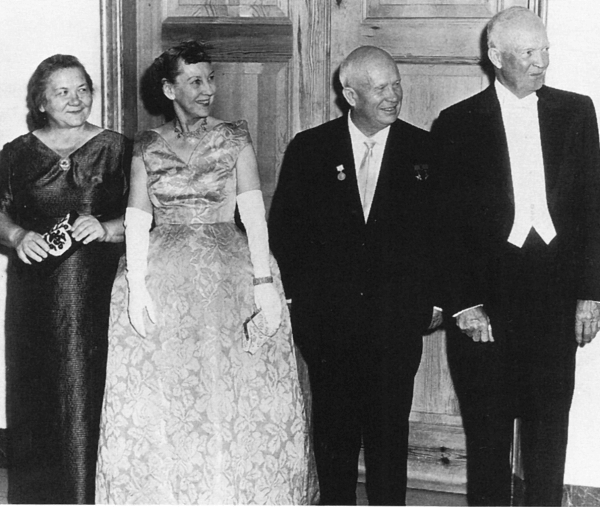
First Secretary Nikita Khrushchev, President Dwight D. Eisenhower, and their wives during Khrushchev's September 1959 visit.
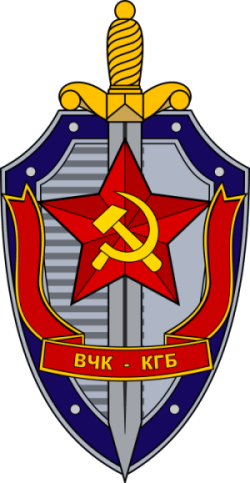
Emblem of the Committee for State Security.
Around this time, the Soviets realized the Americans were aware of the Tabasar-B installation. Time was ticking for the Soviets to produce something of value from the facility. By order of First Secretary Nikita Khrushchev himself, the Committee for State Security’s (KGB, StateSec) newly formed 16th Directorate took direct control of Relic matters along with the Department of Relic Research and Protection excavating and researching the Relics.
The 1960s
For the first full decade of the Cold War, both sides participated in the investigation and reverse-engineering of Relics. Near the end of the 1950s, the Americans were closing the gap in Relic matters, while the Soviets continued to fail to produce something of value from Tabasar-B. All of this would change during the 1960s. During this time, both sides began programs for Relic-based weaponry. The 1960s would be the beginning of an age of madness that would not end until the conclusion of the conflict.
Tabasar-B & “Идиот” (Moron) - 1961
The Soviet Tabasar-B facility, also known as the “Starfish”, was an immense production facility built as a replica of the First Relic from the Urkunde-01 site in Germany. The facility was located within the borders of Tabasar-B Proving Grounds in the USSR. Defense of the facility was considered a top priority to maintain secrecy and protection of Relic research. An aircraft regiment, anti-air weapons, and widespread missile coverage completely encapsulated the facility for this purpose. Testing of the facility began back in 1950; however, it failed to produce anything successful. The status quo would be maintained until 1958 after an American U-2 reconnaissance plane was shot down while investigating the site. The Soviets, knowing the US was aware of the site by then, invested heavily into the success of the facility. Despite countless failures, Tabasar-B finally produced a successful “subject” on January 28th, 1961.
Tabasar-B had begun to prove itself as a fruitful effort. The Soviets’ patience had finally paid off when the first subject was created. The subject was a sort of non-organic-mechanical mass. The Soviets named the mass the “Идиот” (Moron). During initial testing, the Soviets placed the Moron into a room filled with the substance we now know to be called Collapse Particles. When introduced into the room, it would move itself to consume the matter, but exactly how the mass moves is unknown. It was observed that metal objects consumed by the Moron would decompose into pure mono-elemental powders.
The Moron seemed to be capable of “collapsing” items into their base elemental forms. Given the mass had responded to the introduction of the matter in its environment, it was believed that a guidance system could be implemented to control it. Despite lacking the ability to turn the Moron into a controllable weapon at that time, the Kremlin’s curiosity had been piqued. For Khrushchev, a public display of these machines could be the final message to the Americans that the Soviets will remain as the leaders of Relic technology.
As 1961 came to a close, the Soviets, particularly Khrushchev, felt the strength of the Soviet Union growing. Following the Central Intelligence Agency’s (CIA) failure in Cuba, the summit in Vienna with President John F. Kennedy in June, the rise of the Berlin Wall in August, and the continuation of nuclear tests, Khrushchev authorized a major public display of Soviet power.
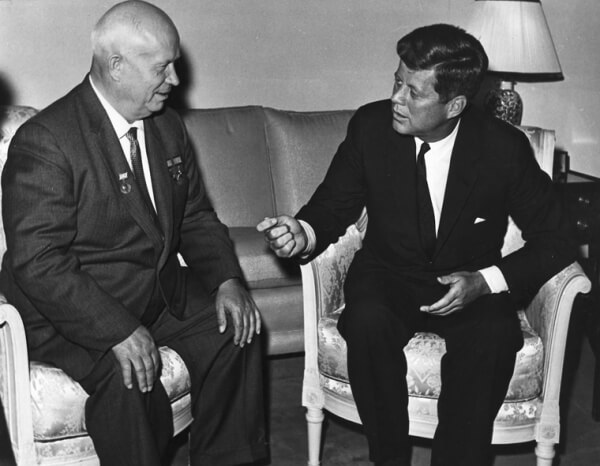
First Secretary Nikita Khrushchev and President John F. Kennedy meeting in Vienna in June 1961.
Khrushchev wanted to make the record clear for Washington that the Soviet Union remained as the top power in the world. He would make his doctrine clear during the 1961 October Revolution Parade in Moscow. On November 7th, 1961, the public learned of reverse-engineered Relic tech for the first time, and the Americans would suffer a crushing blow to morale as a result. During the parade, multiple Morons were put in the back of vehicles and wheeled down the Red Square. While the full capabilities of the Morons were not yet fully known, the Soviets had proven Relic technology could be weaponized. The following day in Washington, Kennedy abandoned the Apollo program and directed its previous funding towards the exploration of the “Relic Civilization”. After the failure in the Bay of Pigs earlier that year, Kennedy and the Americans refused to fall into second place. Allowing the Soviets to become the only Relic weapon armed nation was not an option, thus beginning the age of Relic weaponization.
Cuban Missile and Moron Crisis - 1962

Map released by the US Department of Defense showing the Soviet build up in Cuba.
Following the successful display of the Morons, the Soviet Union began to expand its sphere of influence and power projection. Additionally, during 1962, the Soviets started developing early versions of the Moron control system. This system, named “Емеля-1” (Emelya-1), was a ternary control bus for Moron guidance. As a show of dominance, after speaking to Cuban leader Fidel Castro, the Soviets deployed Morons, anti-air missiles, and new generation fighter jets to Cuba throughout the year. In the event of an all-out war, the USSR had the advantage of first-strike capable weapons in the region. In October, the United States learned of the Cuban and Soviet activities during a U-2 reconnaissance mission over Cuba.
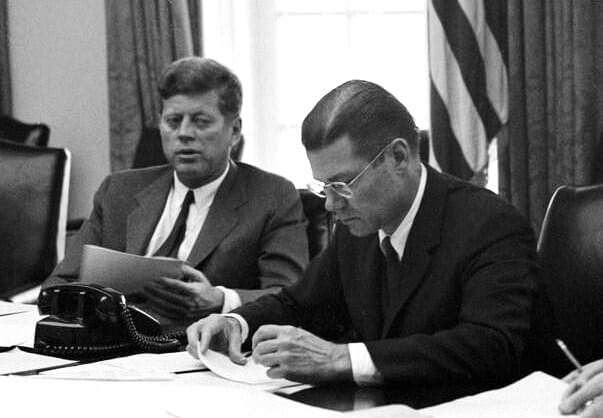
President John F. Kennedy and Secretary of Defense Robert McNamara at the end of the Cuban Missile Crisis.
Once proof of Moron deployment was confirmed in Cuba, Washington panicked. Within a year of the reveal of Morons, the Soviets had already begun deploying them near the mainland United States. For the Americans, the thought of such weapons within range of the mainland could not be tolerated. For the rest of October, the US and USSR engaged in a series of intense negotiations and political tensions over the incident. If the Soviets refused to negotiate, the US would mount an invasion of Cuba which would likely lead to World War III. Of course, this was seen as a final option only to be used as a contingency. The US refused to allow the USSR’s weapons near American borders, and the Soviets wanted NATO ballistic missiles out of range from their own borders.
By the end of October, a deal was brokered by both sides. In return for the Soviets pulling the Morons out of Cuba, the Americans agreed to pull nuclear missiles from several NATO allied nations. The world sighed a breath of relief for it had avoided armageddon, but it was not without a cost. NATO allies in Northern Europe felt the Americans had appeased the Soviets by pulling the missiles, prompting several of these nations to leave NATO in the following years.
Urkunde-01 & 90Wunsch - 1962-1971
Following the Cuban Missile Crisis, the East and West backed down from one another for some time. Both sides understood that if tensions became hot enough, a third world war with a nuclear exchange would be inevitable. Relic weapon development would not end, but the deployment of these types of weapons would be put on temporary hold. During this short period, both sides returned to investigating and developing Relics in their nations with a lowered threat of global war.
First Relic Investigation Working Group
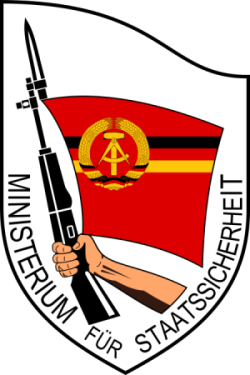
Seal of the Ministry for State Security.
The Soviet Moron program continued onward with further research into the origins and workings of the First Relic. Considering the Tabasar-B facility was based on the First Relic from Urkunde-01, the Soviets decided to study it further for possible assistance in the Moron program. To aid in the new First Relic research, the ministers of the German Democratic Republic (GDR/East Germany) ordered the formation of a new project team from the Leipzig University of Karl Marx. The First Relic Investigation Working Group was led by Colonel General Markus Wolf, the foreign intelligence director of the GDR’s Ministry of State Security, more commonly known as the Stasi. The KGB’s 16th Directorate handed over the First Relic to the Stasi’s Main Directorate for Reconnaissance (HVA) for the purpose of research.
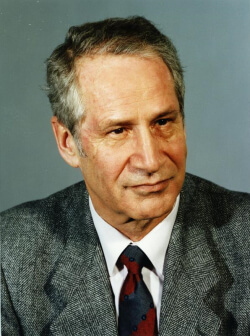
Colonel General Markus Wolf in December 1989.
Wolf kept notes of his discoveries and experiences during the Urkunde-01 investigation in various journals and reports. The site of the First Relic was inside a massive, seven-story tall hollow underneath the Nordhausen mountains. The site was guarded by two heavy steel doors at the entrance. The hollow walls were reported to be some kind of metallic substance with a series of 120° indentations located along them. To the German researchers, this place was nothing more than mere rumors until they arrived. Urkunde-01 was clearly not of known human origin.
Markus Wolf’s research team was rendered useless during the early parts of the Urkunde-01 re-exploration. The Russians had taken most of the Relics and the remnants off-site, leaving only the hollow itself with the indentations. The team hypothesized the grooves in the wall were laid out like an interface, but their purpose remained a mystery. Flake samples of the wall were taken to determine the composition of the metal, and these tests confirmed that they contained titanium dioxide, iron oxide, and other metal oxides. After this test, the team concluded that Urkunde-01 was of non-natural origin. Due to a lack of assistance from the KGB, the Urkunde-01 re-investigation would not pay off until at least 1965.
Wolf mentioned that the KGB Chairman Vladimir Semichastny was not helping their investigation as he kept the KGB’s lips sealed about anything Relic-related. However, Semichastny did apologize to his East German comrades about the crisis in Cuba beforehand, assuring them that the weapons deployed would never be pointed towards them. Fortunately, the head of the KGB First Chief Directorate, General Aleksandr Sakharovsky, was willing to provide Wolf with some hints for his group’s investigation. Sakhraovsky mentioned the 16th at the time was busy developing the ternary computer, and that Relic management in the Soviet government was very segregated. According to him, the Kremlin was very sensitive to the condition of the Relics. The problems of the Soviets’ Relic research structure would not change until after the OKB-10 Incident in May 1973.

CG of the Relic network, "Zion".
While the KGB’s 16th Directorate continued their development of the Emelya-1 control bus, the East German research team continued diligently to understand the First Relic. Wolf hypothesized the grooves on the wall were a type of electrical interface. Before heading to Cuba for a short time, Wolf ordered a team made up of electrical engineers and personnel with knowledge of computers to analyze the interface. Additionally, to maintain security and secrecy during the investigation, he asked for armed police to stand as guards outside the site. Once Wolf returned to East Germany, he was met with exactly what he’d requested. By December 19th, 1965, three years after the research team was ordered to be formed, a breakthrough had been achieved. Urkunde-01 produced a response after the team inputted electrical signals onto the grooves of the hollow’s walls. Wolf’s hypothesis proved to be correct and the response was proof of it. The First Relic used ternary electromagnetic signals transferred into the grooves for a communication output. The team concluded a building had to be created to monitor and process the signals being emitted from the Relic. The job of decrypting these signals would be left to the scientists at Leipzig University.

Logo of 90Wish in Girls' Frontline. The original 90Wunsch group possessed no logo.
Investigations into Urkunde-01 with Markus Wolf’s team would continue until at least 1971. By this time, the University’s facility for decrypting the signals had been established and was active. This “electronic surveillance center” created by the First Relic Investigation Working Group was given a new name by Wolf - 90Wunsch (German for 90wish). The old codename for the program, Listening Post 90, was publicly changed due to security concerns. In Wolf’s writings, he explained that the true reason for the name change was that the name “90Wunsch” contained his wishes. He hoped that someday the German states could reunify, and he’d no longer have to see his countrymen as enemies. In his words, “Es war immer mein Wunsch (I’ve always wished for it./It’s something I’ve always wished for.).”
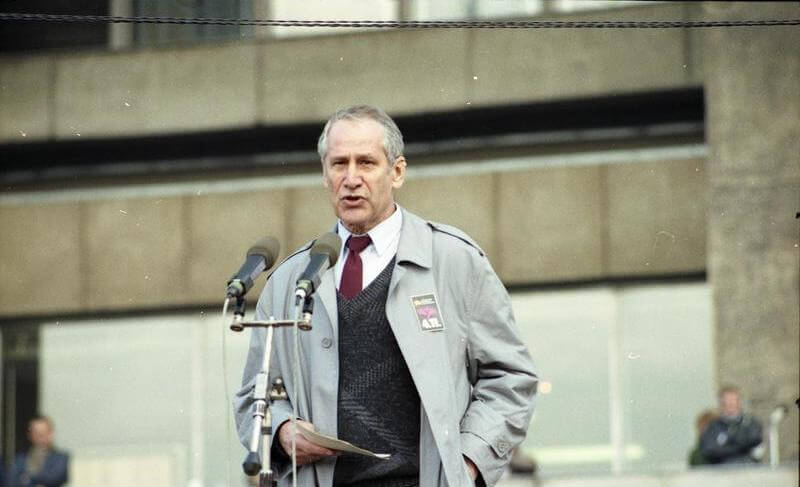
Photo of Markus Wolf during a demonstration in Berlin in November 1989.
The surveillance center located at the University continued to monitor the signals emitted by the Relic, but nothing could be concluded from them. Despite nothing of value being decrypted, 90Wunsch discovered various phenomena from the signals, and these phenomena aided the development of new electronic and radio components.
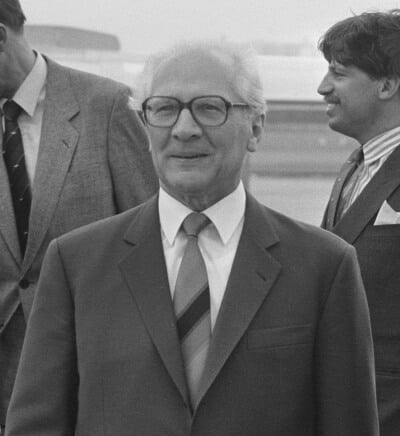
Chairman of the State Council Erich Ernst Paul Honecker while visiting Dutch Prime Minister Ruud Lubbers in June 1987.
Certain members of 90Wunsch held their share of worries about the Relic, with the site likely not being of human origin and was potentially very dangerous. Despite their fears of what the Relic was capable of, 90Wunsch continued their research. Sometime in 1971, Chairman of the State Council Erich Ernst Paul Honecker had already requested that 90Wunsch cease their investigation into the First Relic. 90Wunsch turned to their electronic surveillance center, where their work would continue until the reunification of Germany in 1985.
90Wunsch new mission came from the technical department after monitoring the Relic’s signals for some time. They had detected a NATO listening outpost near the outskirts of Berlin. Using technology and advancements made since the exploration began, they would later participate in electronic eavesdropping of the outpost.
American Relic Developments - Mid to Late 1960s
When the Cuban Missile Crisis ended in 1962, the United States began to look further into Relic matters. The Soviets had kept a gap in Relics for the entire Cold War thus far, and the Americans needed to close it. The Soviets looked more into directly using Relics, but the Americans were far more interested in applying Relic technology for other applications. One of the first systems designed with the application of Relic technology was the U-2 aircraft. By 1964, Skunk Works was in the process of designing another aircraft with more capabilities than the U-2.
Development of the Lockheed SR-71A
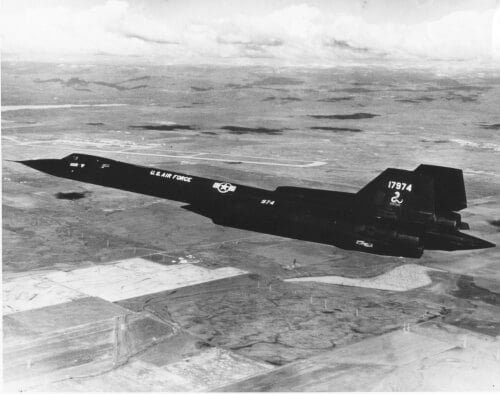
Photo of a Lockheed SR-71A.
Wreckage from a Relic site held by Americans was transported to Lockheed Martin’s Skunk Works for the study of the system. When analyzing the remains, they discovered a design for a new type of thruster engine significantly more powerful than the previous J58 engine. Within a year, the engine had been built and put into service for future aircraft. This new thruster engine, known as the J64, became the successor to the J58. The J64 allowed for significantly more thrust, and the first aircraft to have it implemented was the Lockheed SR-71A in 1967. The SR-71’s first successful test flight occurred in 1967, and soon would be used as a high altitude, high-speed reconnaissance aircraft.
In addition to the SR-71, the Americans began to look further into the prospect of Relic-derived aircraft. Both the U-2 and the SR-71 had proven their usefulness in reconnaissance, and there was no reason to believe Relic-based aircraft with offensive capabilities could not be made. Around this time, plans and designs were drafted for a new type of high-altitude, high-speed strategic bomber meant to be used against the Soviets in the event of WWIII.
Aurora Bomber Concept
This theoretical bomber was given the name of “Aurora”. If the Aurora was created, it would give the Americans a bomber out of the range of several Soviet anti-air systems as well as the ability to conduct operations at a blistering speed. In some circumstances, it could provide the US with first-strike capabilities against an enemy target. The Aurora remained a concept until the 1970s, where it proved a massive show of strength for the United States.
In addition to aircraft, ARPA, along with the US Navy, began a collaborative effort in the research and development of Relic implementations for naval vessels. In 1969, remains of a wreckage taken from the D-51 Relic Site located somewhere in the Lake Central region of California was brought back for research purposes. These remains were confirmed to be parts of a ship’s propulsion system. A new magnetohydrodynamic propulsion system based on these remains was created for the US Navy and was later implemented into destroyers, and by 1978, in nuclear submarines. Destroyers would enjoy a wider sonar radius, and submarines would become nearly silent while under the water. By the end of the 1960s, the United States had increased its funding and efforts into Relic research after the Cuban Missile Crisis. For the first time, the Americans closed the gap on a technological level but still were behind in Relic-based weaponry.
GAVIRUL Discovery - Early 1960s
The Beilan Island Relic Site (No. 27 Class Technological Research Base) was located just off the coast of Shanghai, China, and is currently the only known Relic site in East Asia. During an excavation of the site in the early 1960s, a tremendous discovery had been made. A being of unknown origin was excavated 67 meters beneath the surface of the island. This being was believed to be an intelligent member of the ancient civilization that created the Relics. The individual was given the name “GAVIRUL”, but the Chinese scientific name was “Officer”. GAVIRUL was surmised to be a guardian of the Relics for the ancient civilization due to the area it was found in. After determining the site was of no further value, researchers ordered the Beilan site to be closed and the GAVIRUL put into storage. GAVIRUL would be held in storage for over thirty years before seeing use in the reproduction project in the 1990s.
Relic Gas - 1967-1968

A canister of Collapse Fluid during Singularity in early 2064.
D-9-Beta-Zuma Gas Test
After the discovery of the D-1 Relic Site in 1955, the United States continued to discover and excavate more Relic sites including the D-9-Beta-Zuma Relic Site. D-9 was discovered in November of 1967, near Warren, Wyoming. All sites held by the Americans, including D-9, were managed by ARPA. Deep within D-9’s vault contained massive amounts of the unknown matter found in other Relic sites, in a gaseous state. When researchers at D-9 tried to take samples of the gaseous substance, the matter couldn’t be liquified by conventional means. Interestingly, the fluid would only convert to a liquid state when exposed to organic matter.
Due to the nature of this phenomenon, ARPA scientists at the facility became curious about the effects of the fluid on organic life. In one specific experiment, researchers placed a human test subject within a test chamber to observe what the fluid would do. As the test began, the researchers released it into the test chamber with the subject. A yellowish-green gas filled the room, and following previously observed phenomena, it liquefied when in contact with organic matter. As soon as the fluid came into contact with the flesh of the subject, they began to scream in agony due to the searing pain. Researchers noticed the fluid was melting and corroding the flesh around the area of contact where it was directly “peeling” the flesh away from the bone. Within five minutes of the experiment beginning, the subject expired. Some D-9 researchers became quite intrigued by the results and hypothesized the fluid could be weaponized. If it can completely wipe someone away with only a controlled amount, how lethal would a bomb of this “Relic gas” be?
“Accelerant” - 1968-1969
As the Soviets continued to perfect the Morons, the Americans began to grow acquainted with the idea of Relic weapons as well. Following the end of the Cuban Missile Crisis in October 1962, and the assassination of Kennedy in November 1963, President Lyndon B. Johnson grew desperate for a positive look of the US. The United States required a show of strength; one that could match the Soviet Relic weapons.
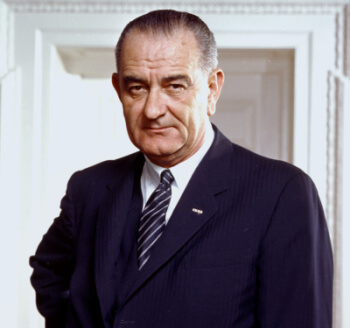
Photo portrait of President Lyndon B. Johnson in March 1964.
Tests conducted from D-9-Beta-Zuma proved the so-called “Relic gas” was devastating when in contact with the human body, and it could be weaponized with something akin to a bomb. It was postulated that after being dropped from an aircraft, an explosive would burst in the air over the target, causing the gas to contaminate the surrounding area. In theory, the gas would likely cause the target area to be annihilated during the bombing and render the surrounding area uninhabitable. LBJ, desperate to save face, immediately supported the project of Relic gas bombs, and in 1968, he requested three, 1-ton canisters of Relic gas for the weapons.
July 1969 Collapse Fluid Bombing
The gas canisters and necessary ARPA equipment were moved onboard the USS Enterprise in the Gulf of Tonkin by LBJ’s order. To maintain operational security, ARPA named the gas canisters “accelerant” and avoided writing the code name on any official documentation.
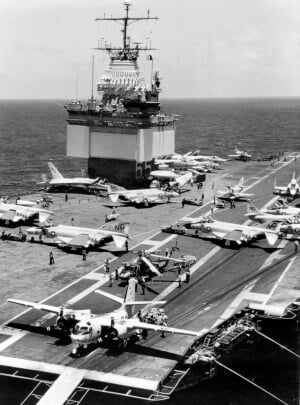
The USS Enterprise (CVN-65) operating off the coast of Vietnam in 1966.
By July of 1969, the first live combat trial of the “accelerant” was authorized against North Vietnamese forces. The target of the mission was chosen to be an undisclosed location near the Ho Chi Minh Trail used by the enemy as a rendezvous point after American bombing runs. A squadron of F-4 Phantoms known as the “Thundercats” would conduct the bombing. The plan called for the Thundercats to start their bombing once the enemy force had assembled at the target location following a bombing run conducted by B-52s. The first use of weapons derived from Relics would soon begin.
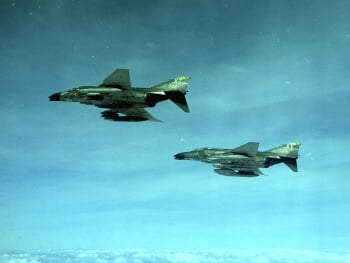
Two F-4C Phantom IIs over South Vietnam in December 1968.
On July 5th, 1969, the mission was given the green light and a Relic gas bomb was mounted onboard one of the Thundercats’ F-4s. The squadron took off from the Enterprise and was en-route to the target following a bombing run made by B-52s in the area. As the squadron arrived at the target, multiple enemy groups had assembled and the Relic gas bomb was released. The bomb burst 300 meters above the target, causing a massive area of destruction. Images taken from a surveillance plane several hours after the bombing exposed the full extent of the devastation and the bomb’s effectiveness.
Aftermath of the Bombing
An area of 500 meters in diameter had become scorched black earth with no signs of life whatsoever. The enemy forces in the rears of trucks were nowhere to be seen, and it was surmised they were killed instantly. Strangely, the wooden furniture of the several Kalashnikov rifles were missing with their barrels warped. It’s believed the substance’s property of “collapsing” organic matter was the cause of the forest and wood furniture corroding away. As for the warping of barrels, it would suggest the gas caused temperatures upwards of 1000°C in the immediate area. Adding additional support to this belief was the presence of glaze on the surface caused by melting ores in the ground.
Interestingly, it was learned by accident that the gas caused extreme levels of radioactivity around it. Ionizing radiation had caused spots to form on the film taken from the surveillance plane despite being over two kilometers above the area. An area of 3000 hectares was believed to be damaged and or irradiated by the bomb. The trial had concluded the bombs were exceptional in their performance. The success of the mission proved to ARPA that they needed more gas for combat trials. After informing the Pentagon of the effectiveness, they requested more Relic gas. The exact amount of Relic gas used in Vietnam remains unknown, but by the end of the war, the canisters never made it onto any recovery manifest, suggesting that all had been used. Regardless of their devastating effects, the overwhelming success of the gas bombs had given the Americans their desired Relic weapons.
The 1970s
As the Americans finally produced successful Relic weapons, Soviet research into their Relics began to stagnate. Ever since the Cuban Missile Crisis in 1962, the Soviets continued their efforts into understanding the Morons and perfecting their systems. Further developments into the Moron project would not occur until at least 1971 at the Tabasar-B facility. Aside from the development of Relic weapons, the superpowers would expand the horizon of their research during the mid 1970s.
“Шука” (Pike) - 1971-1972
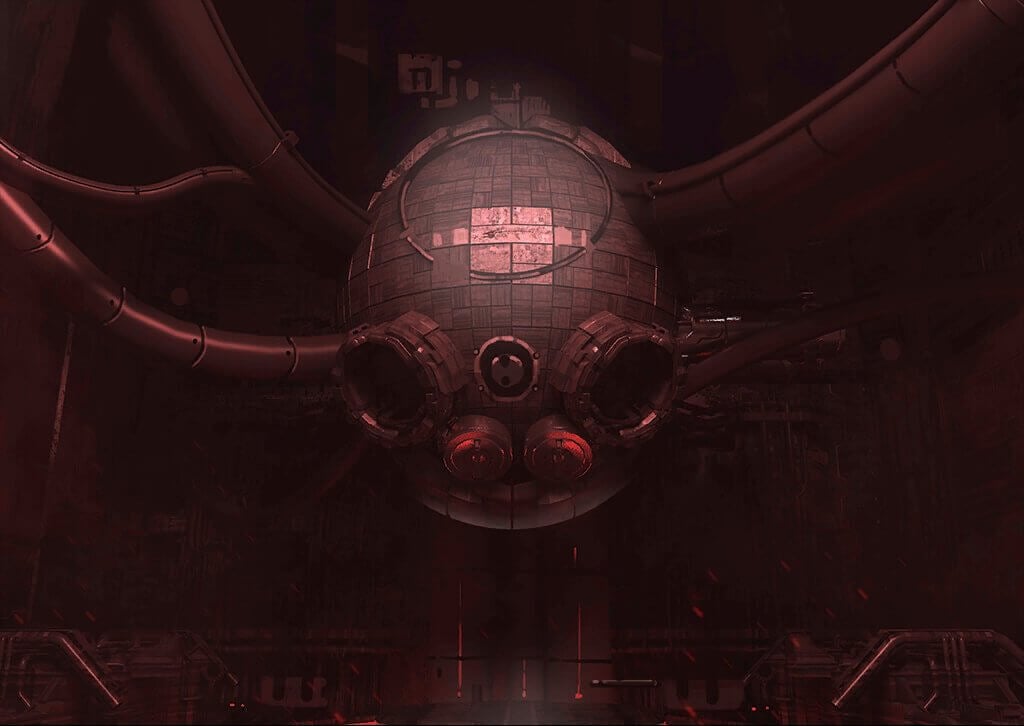
CG of a Pike Node (the core).
With the stagnation of Relic research occurring in the USSR, the Kremlin became impatient with the Moron program. In the time since the Cuban Missile Crisis, the Americans continued to gain ground in the field while the Soviets progressed little. However, the status quo would change once more back into the Soviets' hands in 1971. The Tabasar-B Starfish had stabilized a Moron and the staff soon realized the full identity of the subject. Additionally, a new, revised version of the Emelya-1 ternary control bus, called the “Емеля-M”(Emelya-M), was created to control the Morons. And by 1972, the strategic weapon was completed and was named the “Шука” (Pike).

Vice President Richard Nixon and First Secretary Nikita Khrushchev in July 1959.
Meanwhile, across the Atlantic in 1969, President Richard Nixon had taken power in Washington. Around the period of the Pikes’ completion, Nixon and China brokered an agreement over a possible mutual withdrawal from Vietnam. The Sino-US Joint Communique, alongside Nixon’s earlier visit to Moscow that year, piqued the Soviet interest in presenting the finished Pikes to the world.
1972 October Revolution Parade
Footage of the 1972 October Revolution Parade.
Feeling the strength of the Soviet Union growing, the Kremlin felt this was the time to present their creations to the world once more. During the 1972 October Revolution Parade, eleven years after the Morons’ reveal, 32 “Pike” weapons were put on public display. Once again, the American expectations of the Soviet Relic program were shattered. Previous Defense Advanced Research Projects Agency (DARPA, ARPA before 1972) reports claimed the Soviets had completely failed to weaponize the Morons, but clearly, they were proven wrong. In Washington, Nixon immediately demanded the primary goal of the US national defense be the development of Relic weapons to compete with the Pikes. Furthermore, Nixon chose to abandon the Vietnamese government in 1973 as the US focus shifted away from Vietnam and towards the Relics once more. Following the signing of the Paris Peace Accords (“Vietnam Peace Treaty”), the Americans left Vietnam, and the US’ sole focus by this time was beating the Soviets in Relic weaponry.
Soviet Relic Structure Changes - 1972-1973
Apart from the successful Pike creations, Soviet Relic research continued to decline during the 1970s. This stagnation was believed to be caused by the structure the Soviets used when dealing with matters about Relics. The “independent research institute system” that provided total control by the KGB’s 16th Directorate proved to be detrimental for communication and interaction between Relic researchers. With nearly all Relic matters going through the same department and group, research would become sluggish due to this command structure. Professor M.J. Syrzrvia, head of Tabasar-B’s production team, made several propositions for reforming the research structure to the 16th Directorate. Syrzrvia noticed the success the Americans had with their structure and presumed the USSR could benefit from such a system. According to him, the 16th should share its Relic research with the Lomonosov State University and only deal with the intelligence work on Relics. Syrzrvia’s proposal was looked down upon by the 16th due to their stubbornness and refusal to accept an American-like structure. The research structure would remain as the status quo until May of 1973 during the fallout of the OKB-10 Incident.
OKB-10 Incident - 1973
OKB-10 was a Relic site found by the Soviets underneath the Arctic Polar ice cap and was one of the largest and most remote Relic sites in the world. On May 12th, 1973, the Lomonosov State University and the KGB 16th Directorate lost communication with the researchers at the site. Due to fears of a possible attack or major disruption, Naval Infantry from the Soviet Northern Fleet were deployed to OKB-10 for a search and rescue operation. When the Marines arrived at the site, they were attacked by an unknown enemy. Fortunately, the rescue team was able to put down the enemy and stabilize the situation but not for long. Multiple members of the rescue team had begun showing signs of biological degradation, and control of the situation was lost once more.
An additional team was deployed to OKB-10 to contain what was unfolding. This unit was equipped with Class III anti-biochemical gear in the event of hazardous threats for over an hour. As the second team made their way into the site, contact was lost soon after. Despite their equipment, the average life expectancy of the second team was 20 minutes inside the Relic site. Further details and information about the OKB-10 incident are lacking, and the exact cause of the incident remains unknown. The identity of the enemy force faced by the Marines remains unknown, but the individuals had probably been mutated into Eurosky Low-Emission Infectious Disease (ELID) infected.
Mid to Late 1970s
Aurora Completion - 1974
For several years, the Americans began to ponder the possibility of a bomber derived from Relic research. The plans drafted detailed a high-altitude, high-speed (possibly hypersonic) bomber for swift strategic strikes. The Aurora program began in the late 1960s, and the first successful test flight of an Aurora was completed in 1973. As a message of superiority to the Kremlin, the Americans called for a long-range flight of Auroras over the Soviet Union. On May 1st, 1974, the Auroras took off from a runway in the Yukon and began their flight towards Moscow. At precisely 09:00 in the morning, the bombers entered Moscow airspace and shocked the Russians. The Auroras had pierced the Soviet veil of the Iron Curtain and sent a final message that the Americans would not accept being second class in Relic technology.
Vietnam - 1974-1975
As the Auroras flew over the capital, the Soviets knew the United States was bridging the gap in Relic technology. In an indirect response to the flyover, the Kremlin officially backed the North Vietnamese government and supported an invasion of South Vietnam. Additionally, efforts also increased in the development of the Pikes for possible use in the future. By January of 1975, the North Vietnamese forces had taken the Southern capital of Saigon due to a lack of morale and command structure in the South. The North Vietnamese structure was maintained while the forces of the South broke into smaller groups, leading to a rapid defeat. Both the Americans and Soviets observed this situation with curiosity. To both nations, it became clear that even with the most powerful weapons, the death of an army could be caused by the lack of command and or the fall of morale. This observation motivated both sides towards the creation of informational command networks for their militaries.
ARPANET - 1975
Following the fall of South Vietnam and its military, the United States and the Soviet Union realized the importance of military informational command networks. The armies of South Vietnam were divided and broken down due to a lack of morale and a proper command structure, making them easy pickings for the Northern troops. Both superpowers understood that having more Relic weapons would not matter if their armies lost their structures. Research into informational networks had been started years earlier, but the failure of South Vietnam proved these networks would become instrumental in future warfare. Before 1975, ARPA already designed a network on a smaller scale as early as the late 1960s, and following the fall of South Vietnam, DARPA would pass control of its network, ARPANET, to the US Department of Defense Communication Administration.
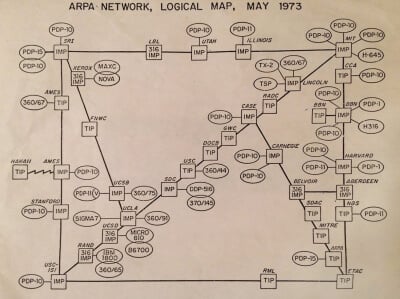
The logical map of the ARPA Network in May 1973.
ARPANET was an informational command network created by ARPA (later DARPA) for use in the US military. The network did not need a central control node, but instead, used a distributed network framework. Network nodes and terminals would share communications data and message packets to other nodes connected to the system. Being a distributed, less-centralized structure, nodes would still be able to share information even if one or multiple network nodes were disabled. This sort of structure would enable those connecting to ARPANET to maintain contact with others even in the event multiple nodes were taken offline. In addition to military use, DARPA was in the process of creating a framework for an autonomous control system based on ARPANET for the Auroras until 1981. Had the Aurora system been created, it would’ve enabled them to become the perfect drone weapon against the Soviets.

The symbol of OGAS.
The Soviet network was substantially different from the American ARPANET in structure. ARPA had created a less centralized structure, but the Soviets continued to prefer a structure with a chain of command. Technical Director Victor Glushkov, director of the OGAS project, saw an increase in support and funding from the Kremlin after the Collapse of South Vietnam. Thanks to the additional resources at hand, Glushkov would further continue his efforts. The network was first created during the 1960s, and was named the All-State Automated System (OGAS). The blueprints for the system were first extracted from the OKB-413 Relic Site near Minsk sometime prior.
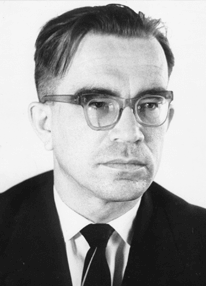
Portrait of Victor Glushkov.
As opposed to ARPANET, OGAS was built as a network with a “tree-like” structure. Two levels of mainframes existed within this system - superior and subordinate mainframes. In this tree-like layout, superior mainframes had control and oversight over subordinate mainframes. Superiors also would allow subordinate mainframes to communicate with one another. The superiors had complete control of authorization for the lower levels, but the subordinates completely lacked this ability. It would be because of this that one of the main flaws with the system was caused by an event that disabled the superiors. If a superior mainframe was disabled, the subordinates would be rendered useless as they were unable to change their authorizations or protocols without the superior.
Regardless, OGAS was implemented into the Soviet command structure and remained in use until the fall of the Soviet Union. Like the Americans, the Soviets started to peer into the prospect of applying their network into Relic-derived machines and weapons. The National State University’s new objective became the implementation of a Pike command network based on the OGAS system.
Lady Liberty Experiments - 1976
Notice: Much of the information from this specific section is subject to change with the release of Confidential Files #3 and Reverse Collapse Code Name Bakery.
For several years, the United States was experimenting with the Relic sites themselves. A series of at least eleven experiments known as the “Lady Liberty” experiments were conducted at the D-1 Relic Site at Lake Vostok, Antarctica. These experiments involved four autonomous and seven manned missions through the D-1 “Door”. The primary goal of these tests was to send a small submersible craft beneath Lake Vostok, through the “Door”, and emerge in the D-2 Relic Site in Los Alamos, New Mexico. Throughout six of the seven manned missions, five were successful, one failed, nineteen individuals took part, and three participants did not survive. US Army Green Beret Technical Specialist Gorman Weyland had been involved in two previous Lady Liberty experiments, with the 7th manned mission being his third.
During the eleventh test, Weyland entered the submersible and entered through the “Door”. Upon surfacing at D-2, it was clear Weyland had been injured during the mission and was placed into a quarantined decompression room following his arrival. Researchers and medical personnel conducted a physical check upon him to determine his sickness. Tests confirmed Weyland was in the process of developing an unknown sickness with multiple strange symptoms.
The proteins within Weyland’s body were digested with their molecular links beginning to break down, possibly due to damage. Connective tissue and amino acids throughout his body were also in the process of breaking down and decomposing. Both the red blood cell count and the blood-oxygen carrying capacity had decreased noticeably. Even his body had begun to age at an unusual rate with his muscle strength in decline. Perhaps the most bizarre condition of all, additional calcification occurred in the body and hardness increased in the skeletal structure. The process within the bones caused them to reach a hardness of 400 Hb (N/mm2), a hardness surpassing that of steel.

Type-A ELID in Girls' Frontline.
After 61 hours since the experiment, Weyland had succumbed to his sickness, and due to the odd nature of the disease and technical limitations of the D-2 staff, Weyland’s cause of death was labeled as radiation sickness. Currently, it’s believed Weyland was converting into a Type A ELID before his death, but his body was not strong enough to undergo the DNA recombination stage of ELID. The death of Gorman Weyland represented the first death on the Americans’ part due to ELID. Despite losing one of their own, the US continued to ignore ELID and its disastrous effects on humanity.
1978-1980
During the late 1970s, both superpowers kept to themselves, developing Relic technology and weapons in secret. By 1978, the first magnetohydrodynamic propulsion system was installed into a submarine by the Americans, giving them a strategic advantage in submersible stealth technology. And by 1980, three nuclear submarines had this propulsion system implemented. Meanwhile, in the USSR, the National State University continued to develop an OGAS-like command system for the Pikes. This system manifested in the core of the Pikes, also known as the Pike Nodes. Their respective OGAS source code was stored in these Nodes.
The 1980s
While the nations built their arms and technology, an ominous situation had been unfolding globally. Cases of ELID had skyrocketed but continued to be ignored by both sides. In 1980, over 150,000 had been infected worldwide due to various tests, experiments, and bombings with Relics. Over 10,000 people had been killed by ELID in Vietnam alone due to the Collapse Fluid bombing during the war. Despite knowing the effects of ELID on the population, the US and USSR continued to disregard the growing epidemic. In 1980, regardless of the ongoing ELID epidemic, the Soviets were ready for combat trials of the Pikes.
Pike Deployment - 1980-1981
Like the Americans, the Soviets knew their Relic weapon must be tried in combat to measure its effectiveness. Both the prototype “Morons” and the completed “Pikes” had never been used in live combat and needed to prove their capabilities in the field. As the Soviet-Afghan War continued following the Soviet invasion in 1979, the Soviets saw it as the perfect opportunity to test the Pikes.
A proposition was made to the General Staff of the Soviet Armed Forces for authorization of the combat trial. The General Staff approved the plans on December 5th, 1980, with KGB 16th Directorate Director Mikhail Semenovich Tsvigun in charge of the operation. For the mission, he adopted the identity of “Technical Director Borikin”. Mikhail, more commonly known today as “Old Misha”, was awarded the Order of the Red Star for his service in the operation. The operation was conducted by the 794th Guards Engineering Corp in the following January. In the time leading up to Christmas 1980, four Pikes were flown in a Mi-6 helicopter from the railway hub in Tajikistan to the outskirts of Kabul. The 794th was deployed to Afghanistan on January 2nd, 1981, and began preparations on the Pikes.
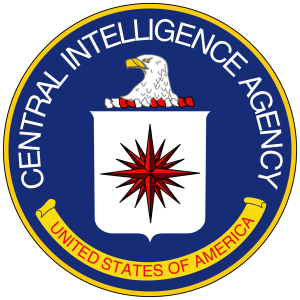
Seal of the Central Intelligence Agency.
The target of this combat test was a CIA-funded, Mujahideen training camp near Landi Kotal, Pakistan in the Khyber Pass. Once the 794th had completed their checks of the Pike units, the operation was moved to Jalalabad, closer to the border with Pakistan. Final checks and adjustments were made in the evening of January 4th, and the operation would soon begin. At midnight on the 5th, the mission officially began. Due to the presence of Stinger MANPADS in the Mujahideen’s hands, a limited number of the 794th were forced to stay in Jalalabad for repair and decontamination of the Pikes. A small portion of the 794th would escort and activate the Pikes upon crossing the border. To avoid sounding alarms and drawing too much attention to the trails left by the Pikes, the escort group set off at midnight. At 07:14 local time, the group arrived at the border and awaited the call to begin the assault. The order was given to attack, and the escort team ordered the Pikes’ Emelya-M control buses to move forward.
Attack on Landi Kotal
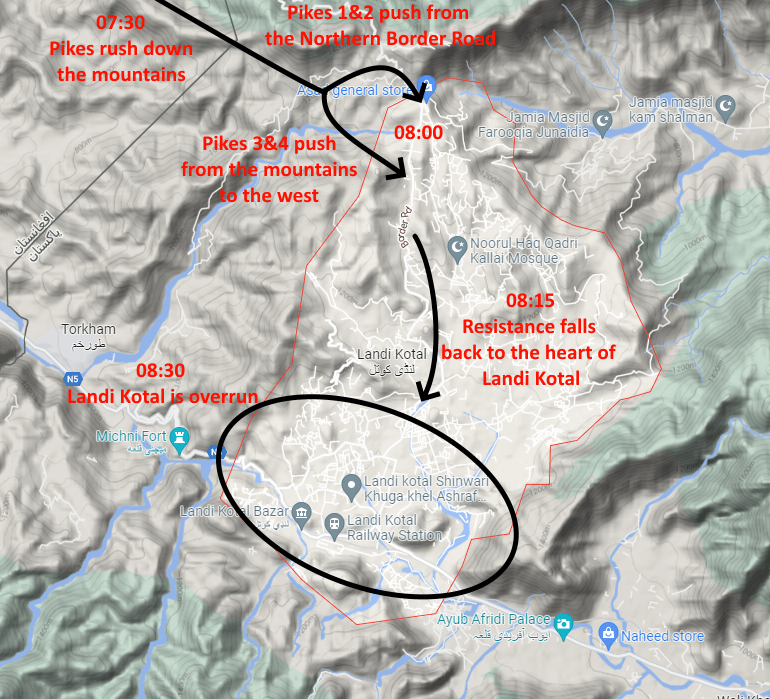
A map of the January 1981 Khyber Pass operation. Note, this map is not canonical as it's a "best guess" of the attack path.
At 07:30, the Pikes descended the mountains at 32kph towards Landi Kotal (6km away). Fifteen minutes later, the tracks of the Pikes were spotted by the guards and the alarm was raised. The Pikes entered their “Devour” mode, and began to attack all targets in sight. Within ten minutes, the four Pikes split into teams of two, attacking the camp from two sides at once. Team one flanked the base from the northern road, and team two continued to push forward from the mountains.
The northern road on the outskirts of Landi Kotal.
By 08:00, the Mujahideen set up a defensive line in preparation for the oncoming force. The Pikes showed no sign of damage or stopping with all attacks, including rockets and machine guns, doing nothing against the machines. Within ten minutes of the line forming, both groups of Pikes had broken through the perimeter. The enemy began to fall back to Landi Kotal to prepare a stronger resistance.
As the Pikes moved closer to Landi Kotal proper, enemy artillery fired upon them. An enemy 105mm howitzer fired near two of the Pikes, but neither received any damage. After breaching the camp, anti-tank rockets were fired towards the Pikes to no avail. Additional 60mm to 80mm weapons were fired to no effect against the Pikes. It seemed that these machines were invincible to small arms and artillery. By 08:30, the camp was destroyed, and the remaining enemy retreated from the village. In only a single hour, the Pikes had descended towards Landi Kotal and took over a base harboring over a thousand enemy soldiers equipped with small arms, rockets, and artillery without suffering any damage whatsoever. The Pikes had won the battle with an overwhelming victory.
Results of the Pike Deployment
Ten minutes after conquering the base, the Pikes rendezvoused for extraction. They were placed in their “can” containers and loaded onboard a Mi-6 back to Jalalabad. Upon arriving at the city half an hour later, the Pikes were offloaded and sent for inspection. Members of the 794th immediately started cleaning excess Collapse Fluid and checking for leakages on the Pikes during decontamination. Fortunately, none of the Pikes showed any signs of damage or major fluid leakage. With the conclusion of the Pike combat trial, they had proven themselves to be a formidable force with substantial resistance.

Fan creation of the reconned area (not canonical).
Following the retrieval of the Pikes after the assault, multiple MiG-25s traveled from Kandahar in the South to Landi Kotal for reconnaissance. Multiple images were taken from the jets, revealing the disastrous aftermath of the assault. As the Pikes traveled, they left 8-meter wide scorch marks as trails. Furthermore, multiple objects seemed to shimmer within said trails, which are believed to be a glaze. The ores in the ground had melted into a glaze, something possible when the temperature surpasses 1000℃. Taking this into account, it’s believed that the Pike units operate at exceptionally high temperatures.
As the Pikes moved throughout the area, objects in their path, including half of a house, had been destroyed. In accordance with observations at the Tabasar-B facility, the Pikes caused objects in their path to be “collapsed” down into base elementary particles. All organic matter vanished from view, no survivors had been found, and the camp had been reduced to rubble. Taking all of this into account, a solid explanation can be formed on the working of a Pike in combat. A Pike unit uses Collapse Fluid within itself to create a “force field” around it. All matter that comes into contact with the force field is broken down into its base elements. This reaction generates a significant amount of heat, likely causing the glaze and scorch marks observed on the ground. When knowledge of the capabilities of Pikes reached NATO, they knew small arms and artillery were useless, and armored units might prove ineffective as well.
ELID Crisis - 1980-1981
By 1980, over 150,000 people were infected with ELID worldwide. Due to the American Collapse Fluid bombing, over 10,000 in Vietnam had been infected as a result of the “Collapse radiation”. ELID was introduced in the Middle East and Central Asia following the Pike deployment in the Khyber Pass. An additional 50,000 individuals were infected from 1980 to 1981. 5000 of this newly infected group successfully mutated into ELIDs, with mutations across the globe increasing. ELID was a death sentence for all those who contracted it at the time due to lack of knowledge of its infection vectors and known treatments against it. Furthermore, several nations created special units to combat the infected to little avail due to a similar lack of experience and technology. Because of the mutations and varied conditions of the infected, much of the then existing combat data against ELIDs was considered void. As the full scale of the epidemic was realized, the superpowers knew the problem was unavoidable.
The Relic Arms Limitation Treaty of 1981
ELID had proven itself to be a serious foe to the well-being of humanity, and it could no longer be ignored. The United States and the Soviet Union would come to a bipartisan decision to curb the ELID crisis. During the discussions, both nations revealed their Relic weapons and technology to one another, and it was apparent that the use of Relic weapons was the root of the ELID epidemic. The superpowers knew the use of such weapons would inevitably lead to humanity’s demise. In late 1981, the Relic Arms Limitation Treaty was ratified for the safety of the world. The conditions of the agreement included the halting of all Relic research temporarily and the dismantling of all active Relic weapons. The discussion would continue until 1983 on how to curb ELID with the development of vaccines.
Geneva Gazette - 1983
During the ELID epidemic, unity between nations was proven to be the only saving grace to halt crises. To assist in containing ELID and reducing the chances of a second Relic arms race, General Secretary Yuri Andropov and President Ronald Reagan announced the Geneva Gazette. On July 1st, 1983, the Geneva Gazette would bring an end to the 35-year-old conflict between the nations. With the end of the Cold War, tensions cooled across the globe, and research for an ELID vaccine was ongoing. The official Geneva Gazette declaration was as follows:
“We hereby declare the end of an era, an era known as the Cold War, an era where two sides took part in total military, economic, and political conflict against each other. In the face of this global danger that rises beyond race and nations, both sides have chosen to set aside their prejudices and ideologies. We will, and we have to unite to ensure the continuation of the human race. It is with that spirit that both sides now sign this gazette.”
Yuri Vladimirovich Andropov
Portrait of General Secretary Yuri Andropov.
Ronald Wilson Reagan

Portrait of President Ronald Reagan.
Post-Geneva Gazette
A new age of peace and unity had begun between the previous rivals, with a newfound focus on stopping ELID. Following the Relic Treaty and the Geneva Gazette, many Relic technologies and armaments were destroyed or sealed away. Despite the agreements, both sides knew Pandora’s Box for Relics had already been opened, and the only thing preventing someone from taking over or destroying the world was goodwill. On the Soviet side, the Pikes, and the relevant technologies, were sealed in storage throughout the Soviet Union to prevent theft and or misuse. The Pikes were stored in multiple OKB facilities across Eastern Europe and Central Asia, where they still reside to this day. KGB 16th Directorate Director, Mikhail Tsvigun, assisted the conversion of the OGAS network from military to economic use. The new system would come to be known as the “All-State Automation System” with the purpose of economic management of the Soviet economy founded on earth sciences.
Der Zauberberg - 1970s-1980s
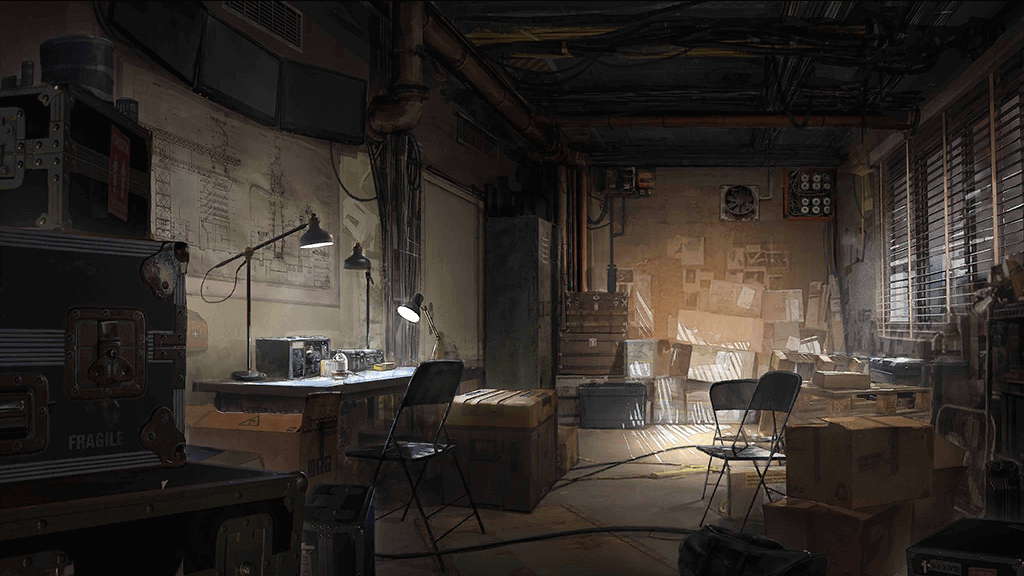
For several years, the 90Wunsch organization in East Germany continued its work at Urkunde-01 and their electronic surveillance center. The organization had detected a massive NATO radio surveillance station in the Federal Republic of Germany (GFR/West Germany) sometime during the 1970s. This “Berlin Ground Station” was located near west Berlin on top of a mountain named Der Zauberberg. According to 90Wunsch, the station’s surveillance system could track, jam, and alter all radio signals in and out of the Warsaw Pact including internal military command channels. Thanks to 90Wunsch’s surveillance center, Der Zauberberg was discovered and eventually infiltrated electronically.
With the NATO intelligence system breached, the East Germans slowly began to covertly take over operations of the facility remotely. At first, they were able to transmit false information and stop the actual information to Zauberberg; however, they couldn't send fake orders to NATO command. Thanks to State Security radio espionage groups, radio specialists were able to break through and electronically take over Zauberberg. For a decade, the East Germans were the true heads of the facility, running a major campaign of electronic warfare and counterintelligence against NATO. Vast amounts of false information were sent to Zauberberg, and eventually Washington, until after the German reunification in 1985.
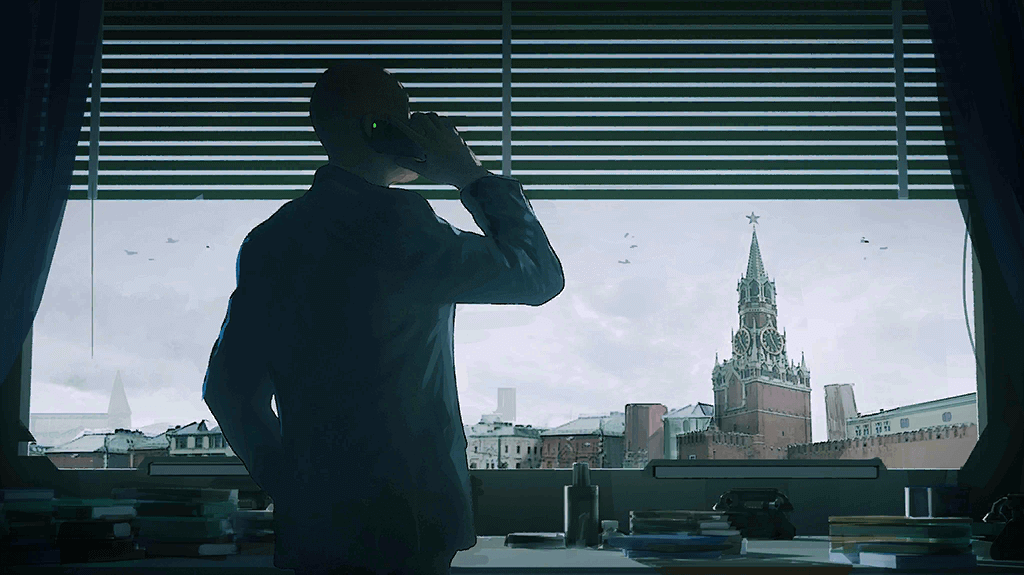
After the Relic Arms Limitation Treaty was signed during the ELID crisis, 90Wunsch was disbanded, splintering many of its members between NATO, the Soviets, and the United Nations. When the East and West states unified in 1985, much of 90Wunsch’s information was handed off or destroyed. For Markus Wolf, one of his final wishes was a possible economic system like the Soviet OGAS system to help the deteriorating German economy. Because of Honecker’s earlier intervention to cease further investigation into Urkunde-01 by 90Wunsch and Wolf, this system never came to be in Germany. Following 90Wunsch’s disbandment, its data was vetted by Wolf and then sent to either be destroyed or handed over to Mikhail Tsvigun.

